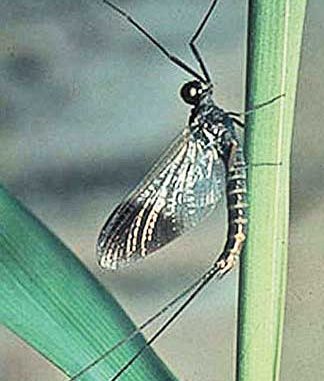
One of my favorite ways to catch bass, like a lot of other people, is on topwater baits. In the summer, you’ll typically have a topwater bite, especially early in the morning, but it often goes away by the time the sun gets up good.
But if you keep your eyes open this month, you can find a topwater bite that a lot of fishermen don’t know about and even fewer pay attention to — the mayfly hatch.
Mayflies are aquatic insects that trout fishermen know all about. When a mayfly hatch takes place on a mountain stream, every rainbow trout in the neighborhood takes notice and ties on its feed bag. But mayflies occur in bodies of water across South Carolina, and they’re the instrument that can kick off a feeding frenzy around the banks of ponds, lakes and rivers.
You would think by their name that they’d show up in May, but I’ve always found that July is the month when they’re the most active. What happens is, mayflies are hatched and develop underwater, often attaching themselves to rocks. As they mature and change from a larval stage to a true insect, they emerge from the water, spend a few minutes drying their wings at the surface, then fly off to nearby vegetation. They go through a mating ritual, then fall, exhausted to the surface and die.
It’s in those few minutes when they’re on the surface — coming and going — that can make a topwater fisherman’s dreams come true. Mayflies will attract all kinds of predator fish, but the important ones to us are bream and bass. Bream will literally gorge themselves on mayflies. Find a swarm of mayflies around a willow tree or some other kind of shoreline bush, and you’re sure to find a mess of hungry bream just sitting there, waiting for Mother Nature to serve them up on a silver platter.
The bass will be there, too. You’ll occasionally see a bass eat a mayfly, but what they’re there for is to feed on the bream. It’s kind of a circle of life, the food chain in action.
The key is paying attention and being able to recognize a mayfly hatch. Willows and other bushes are key spots because the mayflies need a place to land once they emerge. I’ve seen them most often swarming around willow bushes, but you just have to keep a watch out for them. Be on the lookout for birds, only this time, maybe not the gulls that tell you where the stripers are during the winter. Black birds — and a lot of other species of birds — will flock to areas where mayflies are hatching. They’re a good indicator.
What’s great is, the hatch can be at different times in different areas of a river or lake, so you might have a good mayfly hatch on the lower end of a lake one week, then the hatch is on the upper end the next week. That can mean two really good weeks of topwater fishing.
If you’re a bream fisherman, this is almost as good a time to catch them as when they’re spawning, fanning out those dish-shaped beds in great big colonies. You can take a fly rod or a little ultralight spinning rod with a Beetle Spin and have a blast.
Bass prey on bream an awful lot, and when mayflies are around, it seems like bream let their guard down, giving bass a great opportunity to feed. That’s what a bass fisherman counts on.
When I find a mayfly hatch, I usually try to tie on three different baits. First, I like a prop bait, and my favorite of those is a Brian’s Bee. I’ll also have some kind of popping bait tied on. Bass will be up off the bottom because the bream will be up feeding at the surface on the mayflies, so those noisy topwater baits really work. Then, I’ll have a Senko tied on so I can throw it in there and shimmy it down through those suspended fish.
When I find a mayfly hatch and active bream, I’ll throw my baits right up in the middle of the action, then I’ll fish them all around it. It’s not like when the bream are bedding and the bass are cruising around the outside edges of those big colonies of beds. This time, you want your bait right in among the mayflies that are falling to the surface.
Colors are important to this bite because the bass are feeding almost exclusively on bream. You want your topwater baits to be bluegill-colored: dark green backs, orange and purple bellies, green pumpkin. I’ll fish a green-pumpkin Senko with purple flake. Like the mountain trout fisherman who ties on a pattern like a Green Drake when the mayflies are hatching on a crystal-clear stream, I’m matching the hatch with bluegill-colored baits.
So if you see a swarm of bugs flying around the bank one day this month, don’t automatically reach for the insect repellant. Reach for your bream rod or your topwater baits and have some of the most fun you can have all year.
Davy Hite, a 44-year-old native of Saluda who lives in Ninety Six, was BASS Angler of the Year in 1997 and 2002, and he has won the 1999 Bassmasters Classic and the 1998 FLW Tour Championship. He is sponsored by Advance Land & Timber, Triton boats, Evinrude outboards, All-Star rods, Pfleuger reels, Berkley Trilene, Yamamoto Baits, Owner hooks, Humminbird depthfinders and Solar Bat sunglasses.




Be the first to comment